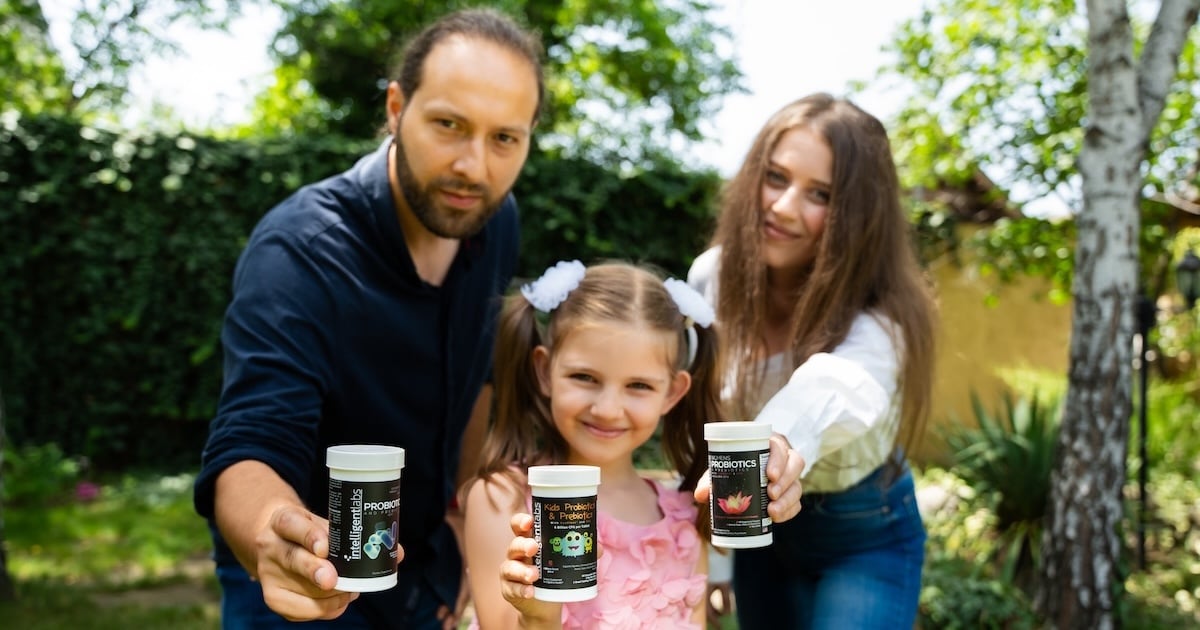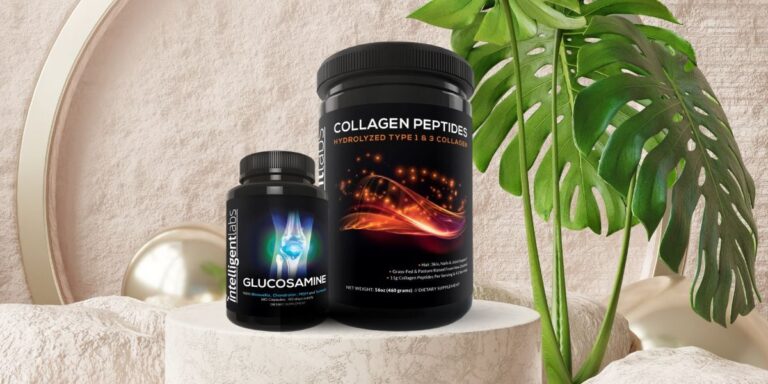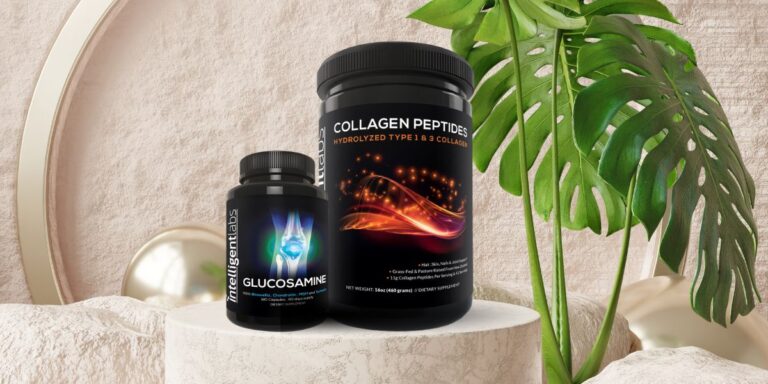Probiotika gegen Akne: Reine Haut beginnt im Darm
Ever feel frustrated when your skin breaks out despite trying every skincare product out there? The answer might surprise you. Clear skin isn’t just about what you put on your face. It starts deep in your gut, specifically within your gut microbiome.
In this blog, we’ll break down how live cultures for acne work, why gut health plays a role in breakouts, and which live cultures can help you achieve clearer, healthier skin.
How Can Live Cultures Help With Acne?
While most acne treatments focus on topical solutions, live cultures for skin acne work from the inside out. Here’s how:
1. Live cultures help restore balance in the gut microbiome
Your gut and skin are closely linked through the gut-skin axis. This connection means the bacteria in your gut can influence inflammation, hormone balance, and even how your skin heals.1
When your gut microbiome is healthy and balanced, your skin is more likely to be clear and calm. But when there’s gut dysbiosis (an imbalance of gut bacteria), it can trigger inflammation, immune system disruptions, and more frequent acne flare-ups.
When taken orally, live cultures may support gut health. They help regulate immune responses and reduce acne severity, making live cultures a useful addition to conventional acne treatments.1
2. Live cultures also work by balancing the skin microbiome
Research shows that live cultures reduce harmful bacteria while enhancing ‘beneficial’ ones to maintain a healthier skin microbiome. Our in-house scientist, Dr. Vijayanand Pujari, explains:
Acne-prone skin often has an overgrowth of Cutibacterium acnes (C. acnes), the bacteria that contribute to clogged pores and inflammation. Live cultures help by producing antibacterial proteins and bacteriocin-like substances that inhibit C. acnes growth, reducing inflammation.2
Additionally, live cultures support the activity of Staphylococcus epidermidis, a beneficial skin bacterium. This “good” bacteria ferments glycerol, a process that naturally prevents C. acnes from thriving.2
3. They help strengthen the skin’s natural barrier
Your skin barrier protects against irritation, dryness, and environmental damage – all of which can worsen acne.
Live cultures for the skin help strengthen this barrier by improving moisture retention, reducing harmful bacteria, and calming inflammation. Some live culture strains even increase ceramide production, a type of lipid that keeps skin hydrated and resilient.3
4. Live cultures may help balance hormones
Hormonal imbalances, especially high levels of testosterone, insulin, and glucocorticoids, along with low estrogen, are closely linked to acne. These imbalances can trigger excess oil production and inflammation, making breakouts worse.
The good news is that taking live cultures for hormonal acne may help stabilize hormone levels. This helps reduce inflammation and support healthier skin.4
5. Live cultures enhance nutrient absorption in the gut
Your gut’s ability to absorb nutrients directly impacts skin health. A healthy gut microbiome improves the absorption of nutrients like zinc, vitamins A and E, and antioxidants. These nutrients are essential for maintaining optimal skin health.5
6. They help reduce the side effects of acne medications
Many acne treatments, especially antibiotics, can disrupt gut bacteria. This can lead to digestive issues, bacterial imbalances, and even antibiotic resistance.
Live cultures help restore beneficial bacteria depleted by these treatments. Research also shows that combining live cultures with antibiotics leads to greater acne improvement than antibiotics alone. Plus, they help reduce side effects like digestive issues and vaginal candidiasis.6

Should You Take Oral Live Cultures for Acne?
Live culture supplements work internally, making them more effective for long-term acne control, especially when acne is linked to hormonal imbalances or gut health issues. They help:7 8
- Improve digestion and reduce systemic inflammation
- Balance hormones like androgens and insulin
- Inhibit acne-causing bacteria like Cutibacterium acnes
Certain strains like Lactobacillus casei, L. plantarum, and L. gasseri have been found to reduce C. acnes overgrowth. Meanwhile, strains like L. rhamnosus GG and Bifidobacterium lactis support hormonal balance in women.1 9
Oral live cultures may be best for people who want to enjoy all the science-backed benefits of live cultures, which go beyond acne and clearer skin! Check out our ultimate guide to live culture supplements here.
What Are the Best Live Cultures for Acne-Prone Skin?
Our Intelligent Labs Live Culture supplements are designed to support gut health, balance skin-friendly bacteria, and promote clearer skin.
* Adult Live Cultures – 50 Billion CFU, 10 Patented Strains, plus 2 types of fibre
* Women’s Live Cultures – 6 Billion CFU, 4 Patented Strains, 2 types of fibre, with Crantiva™ Cranberry Juice Powder and D-Mannose for added urinary and feminine support
Related article: 7 Factors To Consider When Choosing Live Cultures
How Should You Take Live Cultures for Acne?
For best results, take live cultures consistently, ideally with meals and at the same time each day. Combining live cultures with fibre can significantly enhance their effectiveness.
Fortunately, this isn’t something you need to worry about with our supplements! All of our Intelligent Labs Live Cultures are enriched with 2 types of fibre to nourish the live cultures and ensure their survival.
Conclusion
So, do live cultures help with acne? The research suggests yes! They support clearer skin by balancing gut bacteria, strengthening the skin barrier, regulating hormones, improving nutrient absorption, and reducing medication side effects.
💬 Something on your mind? Share your thoughts in the comments. We love hearing from curious minds.
📩 And while you’re here, join our newsletter for more smart stuff (and secret perks)!
References:
- Sánchez-Pellicer, Pedro, et al. „Akne, Mikrobiom und Probiotika: Die Darm-Haut-Achse.“ Microorganisms, Bd. 10, Nr. 7, 27. Juni 2022, S. 1303, https://doi.org/10.3390/microorganisms10071303. ↩︎
- Goodarzi, Azadeh et al. „Das Potenzial von Probiotika zur Behandlung von Akne vulgaris: Eine Literaturübersicht zu Akne und Mikrobiota.“ Dermatologische Therapie Bd. 33,3 (2020): e13279. doi:10.1111/dth.13279 ↩︎
- Gao, Ting et al. „Die Rolle von Probiotika für die Hautgesundheit und die damit verbundene Darm-Haut-Achse: Eine Übersicht.“ Nutrients, Bd. 15,14 3123. 13 Jul. 2023, doi:10.3390/nu15143123 ↩︎
- Arora, Megha Kataria et al. „Rolle der Hormone bei Akne vulgaris.“ Klinische Biochemie, Bd. 44,13 (2011): 1035-1040. doi:10.1016/j.clinbiochem.2011.06.984 ↩︎
- Ozuguz, Pinar et al. „Bewertung der Serumvitamin A- und E- sowie Zinkwerte entsprechend der Schwere der Akne vulgaris.“ Kutane und okuläre Toxikologie, Bd. 33,2 (2014): 99-102. doi:10.3109/15569527.2013.808656 ↩︎
- Jung, Gordon W et al. „Prospektive, randomisierte, offene Studie zum Vergleich der Sicherheit, Wirksamkeit und Verträglichkeit eines Aknebehandlungsschemas mit und ohne probiotische Ergänzung und Minocyclin bei Probanden mit leichter bis mittelschwerer Akne.“ Journal of Cutaneous Medicine and Surgery, Bd. 17,2 (2013): 114-22. doi:10.2310/7750.2012.12026 ↩︎
- Arab, Arman, et al. „Auswirkungen einer probiotischen Nahrungsergänzung auf den hormonellen und klinischen Verlauf bei Frauen mit der Diagnose polyzystisches Ovarialsyndrom: Eine doppelblinde, randomisierte, placebokontrollierte klinische Studie.“ Journal of Functional Foods, Bd. 96, Sept. 2022, S. 105203, https://doi.org/10.1016/j.jff.2022.105203. ↩︎
- Chilicka, Karolina et al. „Mikrobiom und Probiotika bei Akne vulgaris – eine narrative Übersicht.“ Life (Basel, Schweiz) Bd. 12,3 422. 15 Mar. 2022, doi:10.3390/life12030422 ↩︎
- Al-Ghazzewi, F. H. und R. F. Tester. „Wirkung von Konjak-Glucomannan-Hydrolysaten und Probiotika auf das Wachstum des Hautbakteriums Propionibacterium Acnes in vitro.“ International Journal of Cosmetic Science, Bd. 32, Nr. 2, April 2010, S. 139–142, https://doi.org/10.1111/j.1468-2494.2009.00555.x. ↩︎







